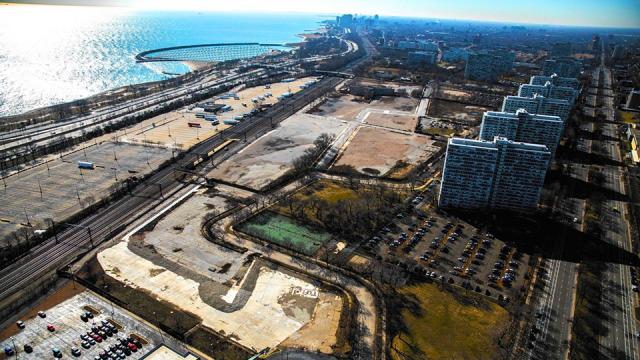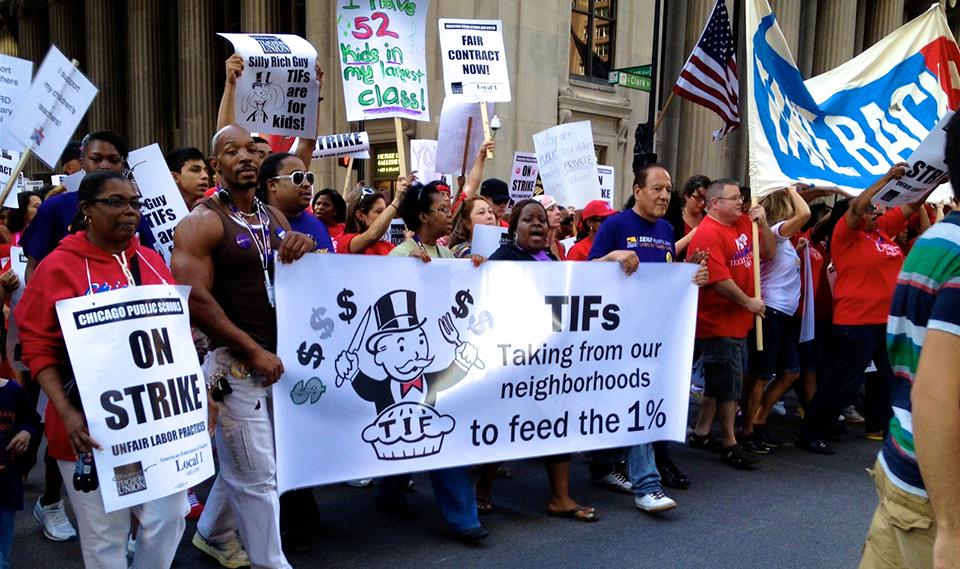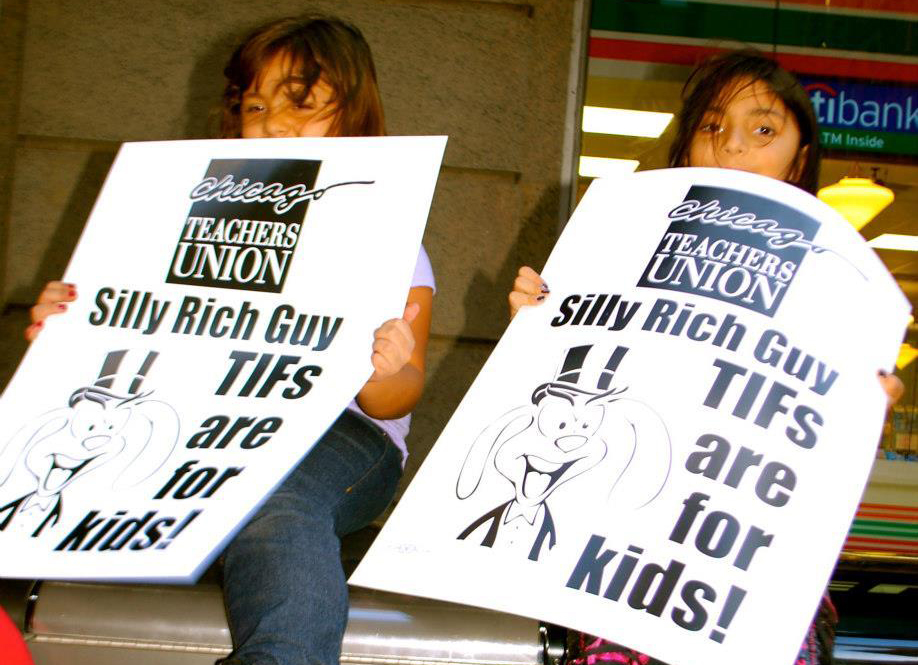
TIF is becoming a dirty word. More and more Chicagoans know it's public money used with little oversight or accountability – even if they don't know TIF stands for Tax Increment Financing. From 2006 to 2011, more than $3 billion went into TIF bank accounts. Where did the money come from? Where did it go?
Ben Joravsky has the Chicago Reader's political beat. Sometime in the 1990s, Joravsky noticed his own annual property tax bill rising. Mayor Richard Daley said taxes were not rising, yet the bottom line on Ben's bill was broken into taxed amounts – this much for schools, this much for parks, this much for libraries. Each year the numbers went up, and each year the schools, parks and libraries cut services for lack of cash.
Joravsky soon realized the breakouts on his tax bill were a fiction: undocumented on the bills, TIF was funneling property tax revenue away from schools, parks, libraries and other taxing bodies. Meanwhile, the financial needs of those bodies were determining the rate properties get taxed. In other words, as TIF takes a slice of the property tax pie, schools, parks and libraries still need their share – causing the pie to expand and property taxes to go up.
And since landlords pay property tax bills with rent from tenants, naturally TIF raised people's rents, too.

Where Does the Money Go?
Just because Tax Increment Financing money was taken away from public goods like schools, parks and libraries, does it necessarily make TIF a bad thing? What if TIF money went from richer schools to poorer schools, for example? Or from fancy parks and libraries to those in "blighted" areas?
That's probably how former Mayor Harold Washington envisioned TIF when the program began in the 1980s: as a good way to get money to places where Chicago needed it. Indeed, state laws say TIF must address blight. Unfortunately, Harold Washington died in office in 1987 and despite the letter of the law, most TIF money has gone to large private corporations with no enforceable terms.
But while the argument can be made that TIF itself wasn't a terribly bad idea, its implementation has been disastrous.
The city's "What’s a TIF?" video talks about all the great things that happen with TIF money. Some great things do happen with TIF money – but $3 billion worth since 2006? As a city, did we get our money's worth? Joravsky doesn't think so.
The city's newest mayor, Rahm Emmanuel, is a savvy politician. Rahm talks about TIF reform but Joravsky says Rahm is mostly just talking. The mayor gave $29.5 million from TIF coffers to Ivanhoe Cambridge, one of the richest real estate development companies in the world, to build a skyscraper in an expensive neighborhood. So much for blight.
Chicago is at least a nominal democracy, so Rahm couldn'tt just give away that money. The subsidy was approved by the City Council and the Community Development Commission. Neither has ever voted down a TIF deal. In the minutes of the City Council meeting where the latest $55 million TIF handout was approved, I didn't find one dissenting comment.
So how do the Aldermen of the City Council perpetuate TIF and still win re-election? Too many were appointed by recent mayors. Many others rely on the mayor's clout to bring city resources to their wards. The impact of TIF is obscured on property tax bills and in public discussions. Until candidates and voters can put two and two together, the City Council will remain a rubber stamp.
A new skyscraper in an expensive neighborhood will create jobs – and as far as I can tell, job creation is the only way anyone could defend Chicago's use of TIF. But at any given time, it's not simple to determine how many public dollars should subsidize what kinds of private development.
The New York Times ran a series by Louise Story called The United States of Subsidies that described how states answer this question (often by hiring consultants who are also on the payroll of subsidy recipients). In the end, defending Chicago's use of TIF by citing job creation reminds me of my neighbor's bumper sticker: "Mink coats don't trickle down."
Joravsky is one of my heroes. He gets the dirt and tells it like it is. Although some readers object to his occasionally flippant cynicism, I sympathize. For years, Joravsky has been exposing Chicago's corruption only to watch its ringleaders get elected, re-elected, and largely lauded by the mainstream press. If Ben is preaching to the choir, then he may as well show us a good time.
Late in 2012, Joravsky wrote about activist Tom Tresser. Tresser wanted property tax bills to itemize the TIF take. If the county can collect it, Tresser said, then they can report it. It was a political can of worms Tresser was opening, and he knew it. Last summer, the county announced that property tax bills would start reporting TIF in the summer of 2014.
Ultimately, Tresser is interested in civic engagement: we wants to see people working to create a better society. His website shows that he's done his homework on TIF. He has planned public presentations, with concrete goals and strategic direction. Now he wants to count the jobs created by TIF-funded projects and create a website that makes it easy to follow the money.
Now I am working with him – I was the "first crowd-sourced TIF illuminator" – and we are documenting TIF revenues and expenditures by ward because the City Council's Aldermen are accountable to their wards. TIF districts overlap ward boundaries, so calculations can get tricky. Apparently much of the data is locked away in a COBOL mainframe computer that was already obsolete when I was in kindergarten.
Now I wonder: is that mainframe in a TIF district – and does it meet the criteria for blight?
3 WAYS TO SHOW YOUR SUPPORT
- Log in to post comments













